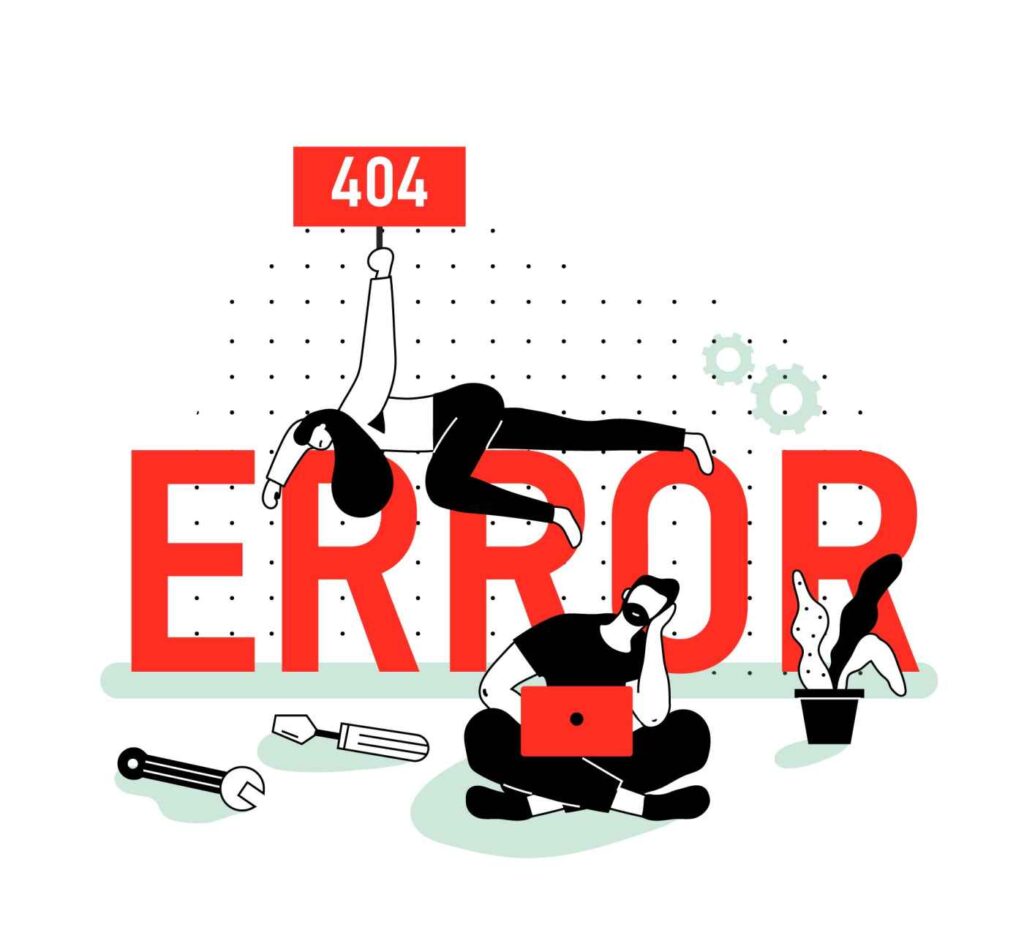Ever clicked a link that goes nowhere? Yes, it is a broken link! It’s like a closed door on the internet. Sometimes folks call these “dead links” or “link rots.”
Broken Links in SEO And Reason
Broken URLs pose a significant challenge in the realm of SEO. These URLs, which direct users to non-existent or inaccessible pages, not only frustrate visitors but also impact search engine rankings. Search engine algorithms consider broken URLs as a sign of poor website maintenance, resulting in lowered credibility and visibility Broken part create a poor impression on visitors, leading to frustration and increased bounce rates. To mitigate this issue, regularly monitor your website by fusing specialized tools. When identified, promptly fix or redirect these broken links to relevant and functioning pages. By ensuring a seamless browsing experience, you can enhance your SEO performance, boost user satisfaction, and improve your website’s overall visibility in search engine results.

- Link Decay: Over time, the external websites you have attached to may no longer be actively maintained or may undergo significant changes. As a result, the URL content may be moved, deleted, or renamed without proper redirection, leading to these on your website.
- Improper Internal URLs: Inadequate internal linking practices can contribute to problems within your website. When pages are restructured, deleted, or renamed without updating internal URLs, it can result in broken links.
- URL Changes: Modifying URLs without setting up redirects leads to broken URLs. This can occur when updating permalink structures, changing domain names, or altering URL formats.
- Typos or Manual Errors: Human error plays a role in these, such as mistyping URLs to incorrect pages. These errors can go unnoticed during content creation or website updates
- External Changes: If you link to external websites, they may change or remove that part from the page without any notification. This can result in broken outbound from your website.
- Page or Content Removal: When webpages or content are deleted or moved without implementing proper redirects, it results in broken errors. This often happens during website redesigns, content restructuring, or when a page is simply removed.
- Link Aging: As time goes on, websites may update or rearrange things, and this might make previously working parts stop working.
- Server or Technical Issues: Temporary server problems, maintenance activities, or misconfigurations can lead to broken URLs. These issues can disrupt the availability of URL pages. To maintain a healthy SEO profile, it’s crucial to regularly monitor and fix broken errors. Implementing proper redirects, conducting regular website audits, and using tools to identify and address broken URLs can help minimize their negative impact on SEO
Optimizing SEO by Using by Addressing Broken Links

Website loading speed is a crucial factor for both user experience and SEO.
Google Search Console: It provides a “Crawl Errors” report that shows broken errors. Online Broken URLs Checker: These are third-party tools that scan your website for broken Errors.
Prioritize broken URLs: After identifying the reason, prioritize them based on their importance. Prioritize fixing broken URLs on high-traffic or critical pages. Update internal URL: If you have a problem pointing to other pages within your website, update them to point to the correct URLs. Ensure that the internal URL is pointing to the appropriate and relevant pages. Redirects: If you’ve moved or deleted a page and it resulted in a problem, create a 301 redirect to send users and search engines to the new URL. A 301 redirect is a permanent redirect that informs search engines that the page has permanently moved to a new location.
Delivery Networks (CDNs): CDNs distribute your website’s static assets (images, CSS, JavaScript) across multiple servers worldwide. This reduces server response time and ensures faster loading for users regardless of their location.
Enable Gzip Compression: Enable Gzip compression on your server to reduce the size of your web pages, making them quicker to load. Optimize CSS and JavaScript: Minimize CSS and JavaScript files by removing unnecessary code, whitespace, and comments. Think about letting non-essential scripts load asynchronously to avoid slowing down how your page appears.
Implement Lazy Loading: Use lazy loading for images and videos, so they only load when the user scrolls down to them. This technique can significantly improve initial page loading times.
Visit:How To Become An SEO Expert In 2025 (Updated)
Conclusion
Fixing broken links is crucial for better SEO and user happiness. Things like link decay, changes in web addresses, and human mistakes cause these issues. Google Search Console helps find and fix them, and making your website faster also makes users happier. If you are interested in digital marketing join the best digital marketing course in Thrissur.

